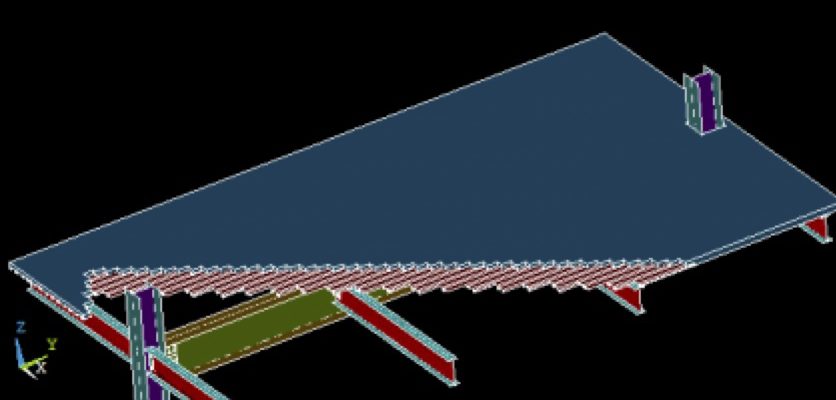The NSF-sponsored team focusing on seismic collectors in steel buildings, an effort highly compatible with the overall SDII initiative – but separately funded, is nearing the end of their first year of work and modeling and testing are fully underway.
In a recent paper they provided a summary of their initial findings and their research plans. From the abstract: “This paper presents an overview of a newly-initiated research program on seismic collectors in steel building structures. Seismic collectors are elements that bring inertial forces to the primary vertical- plane elements of the Seismic Force-Resisting System. Due to the reversing nature of earthquake loads, collectors must alternately carry tension and compression. Collector failure is potentially catastrophic, yet little research has focused on collectors, and both the seismic behavior and demands on these elements are not well understood. Instead, current design code provisions rely on amplified collector design forces. This paper presents the plans of a research program that will use nonlinear analysis of steel collector elements in steel composite floor systems, supported by: (1) large-scale testing of isolated collector elements and connections at the NHERI Lehigh Experimental Facility; and (2) shake table testing of a single-story steel composite floor system at the NHERI UCSD Experimental Facility. The research attempts to: (1) advance knowledge on the seismic performance of collectors in steel composite floor systems under the existing practice; and (2) develop innovative collector concepts that limit the earthquake forces in the structure. Specific objectives are to determine collector properties (strength, stiffness and ductility), characteristics (load paths, limit states, damage accumulation) for different details (collector connections, deck orientation, slab details, etc.) and to quantify the role of composite floor in bracing the collector.”
This work was presented at the 11th National Conference on Earthquake Engineering and the details are summarized in their paper: click here.
